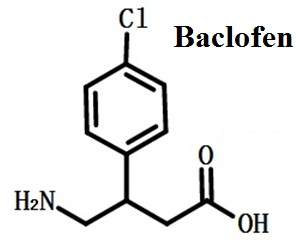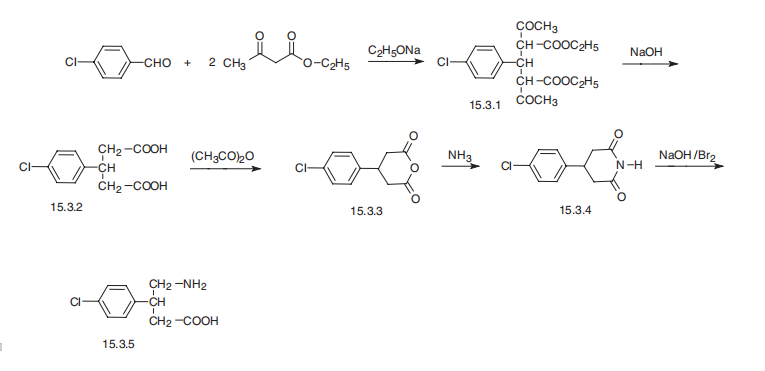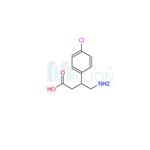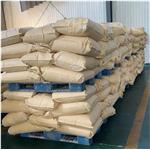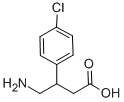
Baclofen
- Product NameBaclofen
- CAS1134-47-0
- MFC10H12ClNO2
- MW213.66
- EINECS214-486-9
- MOL File1134-47-0.mol
Chemical Properties
| Melting point | 208-210°C |
| Boiling point | 364.3±32.0 °C(Predicted) |
| Density | 1.2069 (rough estimate) |
| refractive index | 1.5500 (estimate) |
| storage temp. | 2-8°C |
| solubility | 1 M HCl: 50 mg/mL |
| form | solid |
| pka | pKa 3.87±0.1(H2O) (Uncertain) |
| color | white to very faintly yellow |
| Water Solubility | Soluble in dilute NaOH or dilute HCl. Soluble in water at approximately 4mg/ml at pH 7.6 |
| Merck | 14,937 |
| Stability | Hygroscopic |
| InChI | InChI=1S/C10H12ClNO2/c11-9-3-1-7(2-4-9)8(6-12)5-10(13)14/h1-4,8H,5-6,12H2,(H,13,14) |
| InChIKey | KPYSYYIEGFHWSV-UHFFFAOYSA-N |
| SMILES | C1(C=CC(Cl)=CC=1)C(CN)CC(=O)O |
| CAS DataBase Reference | 1134-47-0(CAS DataBase Reference) |
| NIST Chemistry Reference | Baclofen(1134-47-0) |
| EPA Substance Registry System | .beta.-(Aminomethyl)-4-chlorobenzenepropanoic acid (1134-47-0) |
Safety Information
| Hazard Codes | T,Xn |
| Risk Statements | 61-25-36/37/38-42/43-20/21/22 |
| Safety Statements | 53-22-36/37/39-45-52-36-26 |
| RIDADR | UN 2811 6.1/PG 3 |
| WGK Germany | 3 |
| RTECS | MW5084200 |
| HazardClass | 6.1(b) |
| PackingGroup | III |
| HS Code | 2922492050 |
| Toxicity | LD50 in male mice, rats (mg/kg): 45, 78 i.v.; 103, 115 s.c.; 200, 145 orally (Tadokoro) |
